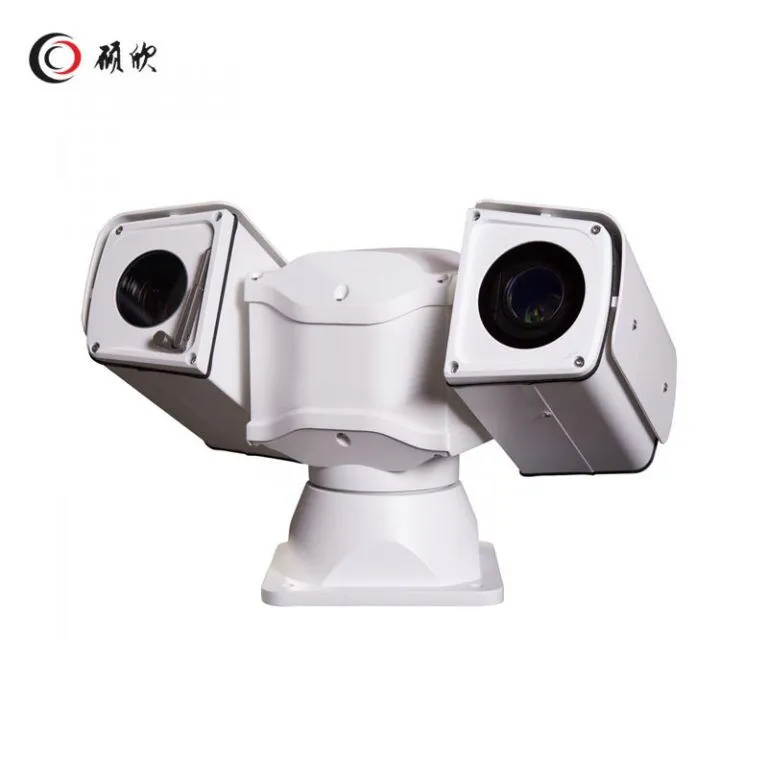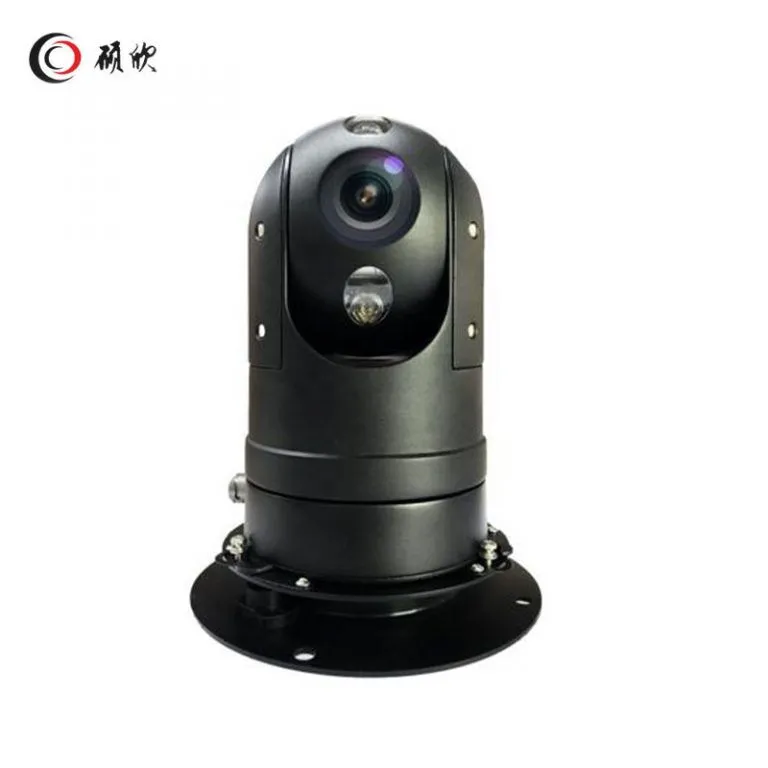Nachtsichtkameras sind sehr hilfreich, um Orte zu beobachten, wenn es dunkel ist. Sie verwenden coole Tricks wie Infrarot (IR), Wärmeerfassung und Sternlichtsensoren, um auch bei wenig oder kein Licht klare Bilder zu machen. Diese Kameras haben starke Teile wie gute Sensoren, IR-Lichter und clevere Objektive, die sie nachts großartig machen. Sie halten dich sicher, indem sie scharfe Bilder zeigen und böse Leute abschrecken. Sie sind großartig für Häuser, Geschäfte oder große Arbeitsbereiche. Wenn Sie eine auswählen, denken Sie darüber nach, wie klar das Bild ist, wie hart es bei schlechtem Wetter ist und ob es mit Ihren anderen Sicherheitsmitteln für eine tolle Nachtbeobachtung funktioniert.
Was sind Nachtsichtkameras und warum brauchen Sie sie?
Nachtsichtkameras sind spezielle Werkzeuge, die Aufzeichnen von Videos in dunklen oder dunklen FleckenSie arbeiten, wenn das Licht niedrig ist oder weg ist. Wenn die Nacht kommt, sind diese Kameras wirklich praktisch, um zu wachen. Sie brauchen kein helles Licht. Stattdessen verwenden sie intelligente Technologien wie Infrarot, Wärmeerkennung oder extra empfindliche Sensoren, um Dinge zu sehen, die unsere Augen im Dunkeln nicht sehen können.
Ob Sie Ihr Haus, einen Laden oder einen großen Arbeitsplatz schützen, mit diesen Kameras können Sie die ganze Zeit beobachten. An Orten ohne Licht – wie Landhäusern, dunklen Gassen, Lagern oder Parkplätzen – ist die Nachtsicht sehr wichtig, um sicher zu bleiben und sich ruhig zu fühlen.
Welche Arten von Nachtsichttechnologien sind verfügbar?
Es gibt verschiedene Arten von Nachtsichtstechnik, um bei verschiedenen Beobachtungsbedürfnissen im Dunkeln zu helfen.
Wie Infrarot-Nachtsicht verstecktes Licht verwendet, um die Szene zu beleuchten
Infrarot (IR) Nachtsicht ist eine häufige Wahl. Es verwendet kleine IR-Lichter, um unsichtbare Strahlen über das zu senden, was die Kamera sieht. Diese Strahlen springen von den Dingen ab und kommen zurück zum Sensor der Kamera. Da die Leute dieses Licht nicht sehen können, kann die Kamera ruhig klare Bilder in völliger Dunkelheit aufnehmen.
Wie thermische Bildgebung Dinge durch ihre Wärme findet
Wärmebildgebung braucht überhaupt kein Licht. Es fühlt Wärme, die von Menschen, Tieren oder Objekten kommt. Diese Hitze erzeugt Muster, die die Kamera in Bilder verwandelt. Es ist ideal für super dunkle Orte oder Bereiche mit Rauch oder Nebel, wo normale Kameras nicht funktionieren können.
Wie Sternlichtsensoren winziges Licht für Farbbilder verwenden
Starlight-Technologie verwendet sehr empfindliche Sensoren, um selbst die kleinsten Lichtstücke zu erfassen, wie zum Beispiel vom Mond oder fernen Straßenlampen. Diese Sensoren machen das Licht stärker, um bunte Bilder zu erstellen. Im Gegensatz zu IR-Kameras, die in der Nacht schwarz-weiß zeigen, bieten Sternenlichtkameras helle, vollfarbige Ansichten auch an dunklen Orten.
Wie funktionieren Nachtsichtkameras?
Jede Art von Nachtsicht hat ihre Art zu arbeiten, wenn es dunkel ist.
Was tun IR-LEDs und Filter in Infrarotkameras?
Kleine IR-LEDs sind wie geheime Taschenlampen für Nachtsichtkameras. Sie leuchten Licht, das die Leute nicht sehen können, aber die Kamera kann es. Tagsüber blockiert ein IR-Filter dieses Licht, damit die Farben richtig aussehen. Nachts bewegt sich der Filter und lässt IR-Licht den Sensor erreichen, um klare Bilder zu erhalten.
Wie können Thermikameras Dinge unterscheiden?
Alles gibt ein bisschen Wärme ab. Wärmekameras erfassen diese Wärme und machen sie zu Bildern. Wärmere Dinge sehen heller aus, und kühlere Dinge sehen dunkler aus. Dies hilft, Menschen oder Tiere zu finden, auch durch Nebel oder Bäume, was es perfekt für dunkle oder harte Flecken macht.
Warum ist Sensorempfindlichkeit so wichtig in Lichtarmen Kameras?
Für Sternenlichtkameras spielt es eine große Rolle, wie empfindlich der Sensor ist und wie weit das Objektiv sich öffnet. Eine größere Linsenöffnung erlaubt mehr Licht. Ein empfindlicher Sensor verstärkt dieses Licht, ohne das Bild verschwommen zu machen. Dies liefert klarere Bilder, auch wenn das Licht sehr niedrig ist.
Welche Komponenten machen eine gute Nachtsichtkamera?
Eine starke Nachtsichtkamera verlässt sich auf gute Teile, die zusammen arbeiten, um bei geringem Licht gut zu funktionieren.
Welcher Sensor ist besser: CMOS oder CCD?
Die meisten Nachtsichtkameras verwenden CMOS- oder CCD-Sensoren. Diese verwandeln Licht in klare schwarz-weiße Videos. CMOS-Sensoren Verwenden Sie weniger Strom und kosten weniger. CCD-Sensoren können in einigen Fällen etwas bessere Bilder liefern.
Warum ist der IR-Lichtbereich wichtig?
Wie weit IR-Lichter leuchten können, bestimmt, wie viel die Kamera nachts sieht. Einige Kameras können weit sehen, wie 150 Meter mit Dual-Objektiv IR-Setups (IR Distance 2 Gruppen Objektiv, 150 m Nachtsicht).

Wie ändert sich die Linsenqualität bei der Nachtbeobachtung?
Ein großartiges Objektiv mit verstellbarem Fokus hält die Dinge in verschiedenen Abständen scharf. Breite Objektive decken mehr Platz ab, können aber Details weit weg verlieren. Enge Linsen konzentrieren sich besser auf ferne Dinge, decken aber weniger Fläche ab.
Kann diese Kamera in allen Beleuchtungen gut funktionieren?
Ja, und sie sind gemacht, um leicht zwischen hellen und dunklen Zeiten zu wechseln.
Was passiert, wenn es überhaupt kein Licht gibt (0 Lux)?
Selbst in totaler Dunkelheit laufen Nachtsichtkameras weiter. IR-Lichter oder thermische Sensoren ermöglichen es ihnen, ohne sichtbares Licht, 0 Lux zu sehen. Dies bedeutet, dass Ihr Platz beobachtet wird, egal wie dunkel es ist.
Wechseln sie selbst zwischen Tag und Nacht?
Viele Kameras ändern die Modi automatisch basierend auf Licht. Tagsüber hält ein IR-Filter die Farben real. Wenn es dunkel wird, bewegt sich der Filter und die IR-Lichter schalten sich für eine reibungslose Nachtsicht an.
Warum Night Vision Kameras zur Sicherheit verwenden?
Diese Kameras sind der Schlüssel, um Orte Tag oder Nacht sicher zu halten.
Wie machen Sie die Nacht sicherer?
Nachtsichtkameras überwachen dunkle Straßen, dunkle Parkplätze oder Ihren Garten nachts. Sie sehen Dinge, die unsere Augen im Dunkeln verpassen, was Ihnen nonstop Sicherheit bietet.
Kannst du Menschen bei geringem Licht noch deutlich sehen?
Mit dem starken Kontrast der Wärmebildgebung oder den großen Sensoren des Sternlichts können Sie Gesichter, Kleidung oder andere Details gut sehen. Dies hilft herauszufinden, wer da ist, auch bei schlechtem Licht.
Halten sie schlechte Dinge auf, bevor sie passieren?
Ja! Ja! Kameras mit Nachtsicht, die Sie sehen können, um Diebe oder Vandale zu erschrecken. Zu wissen, dass sie die ganze Zeit beobachtet werden, hält Probleme früh auf.
Wo sollten Sie Ihr Nachtsichtkamera-System setzen?
Die richtige Platzierung der Kameras macht einen großen Unterschied für die Nachtleistung.
Warum sich von glänzenden Oberflächen für Kameras fernhalten?
Die Einstellung von Kameras in der Nähe von glänzenden Dingen wie Fenstern kann IR-Licht zurückschlagen und die Aussicht ruinieren. Zeigen Sie Kameras weg von glänzenden Dingen für klare Bilder.
Welche Orte bieten die beste Nachtabdeckung?
Konzentrieren Sie sich auf Schwachstellen wie Türen, Einfahrten, Zäune oder Garagen. Stellen Sie sicher, dass die Kamera eine klare Sicht auf diese Orte für den höchsten Schutz hat.
Welche Einstellungen sollten Sie für bessere Low-Light-Bilder ändern?
Passen Sie die Belichtungszeit vorsichtig an. Zu kurz, und Sie verpassen die Bewegung. Zu lang und die Bilder werden verschwommen. Einstellen Sie auch die IR-Empfindlichkeit basierend auf Entfernung und Licht für das beste Bild.
Sollte die Auflösung bei der Auswahl eines Kamerasystems wichtig sein?
Ja! Ja! Klare Bilder helfen Ihnen zu wissen, was vor sich geht.
Warum ist hohe Auflösung wichtig für die Nachtbeobachtung?
Mehr Pixel bedeuten schärfere Videos, auch wenn sie eingezoomt werden. Dies hilft Ihnen oder der Polizei, Menschen oder Dinge schneller und detaillierter zu erkennen.
Was sonst sollten Sie vor dem Kauf denken?
Neben klaren Bildern, denken Sie darüber nach, wie die Kamera Ihren Bedürfnissen passt, vor allem außerhalb oder mit anderen Ausrüstungen.
Wird es schlechtem Wetter standhalten?
Suchen Sie nach wetterfesten Bewertungen wie IP66 oder IP67. Diese stellen sicher, dass Kameras bei Regen, Schnee oder Hitze funktionieren, besonders wenn sie draußen ohne Abdeckungen sind.
Kann es mit Ihrem aktuellen Sicherheitsmittel funktionieren?
Prüfen Sie, ob die Kamera mit Ihren Recordern (NVRs), Cloud-Speichern oder Smart Home-Systemen funktioniert. Dies spart Sie vor zusätzlichen Kosten oder Einrichtungsprobleme.
Welche Stromoptionen sind am besten: drahtgebundene, drahtlose oder PoE?
Kabelkameras sind stabil, brauchen aber Planung. Drahtlose sind leicht zu bewegen, können aber Signalprobleme haben. PoE (Power over Ethernet) sendet Strom und Daten über ein Kabel und macht die Einrichtung einfach und robust.
FAQs
F: Kann ich eine normale Sicherheitskamera anstelle einer Nachtsichtkamera verwenden?
A: Regelmäßige Kameras funktionieren nicht gut im Dunkeln, weil sie sichtbares Licht benötigen. Nachtsichtkameras verwenden IR- oder thermische Technologie, um ohne zusätzliche Lichter klar zu sehen.
F: Sind Wärmekameras besser als Infrarotkameras?
A: Nicht immer. Sie tun verschiedene Dinge. Wärmekameras finden Wärme durch Dinge wie Rauch, während IR klarere Details gibt, um Dinge aus der Nähe zu erkennen.
F: Aufzeichnen alle Nachtsichtkameras Farbmaterial?
A: Nein. Nur Sternlichtsensorkameras zeigen Farbe bei geringem Licht. Regelmäßige IR-Kameras zeichnen in der Regel Schwarz-Weiß in der Nacht auf.


